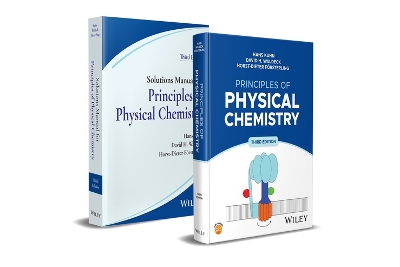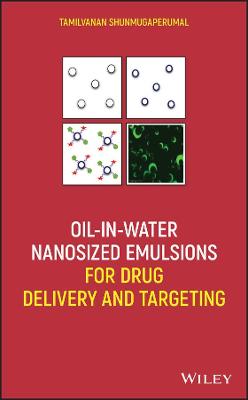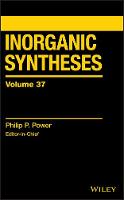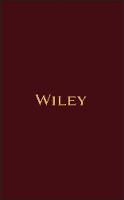Supramolecular Chemistry
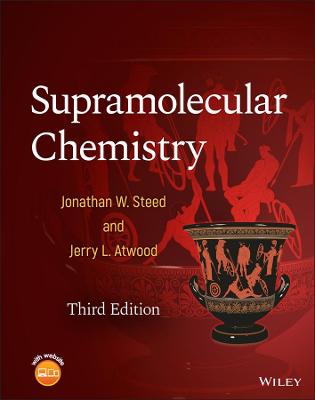 -15%
portes grátis
-15%
portes grátis
Supramolecular Chemistry
Atwood, Jerry L.; Steed, Jonathan W.
John Wiley & Sons Inc
02/2022
1216
Dura
Inglês
9781119582519
15 a 20 dias
2802
Descrição não disponível.
About the Authors xvii
Preface to the Third Edition xix
Acknowledgements xxi
About the Front Cover xxiii
About the Companion Website xxiii
Chapter 1 Concepts 1
1.1 Definition and Development of Supramolecular Chemistry 1
1.2 Classification of Supermolecule Formation 4
1.3 Receptors, Coordination, and the Lock and Key Analogy 11
1.4 Binding Constants 14
1.5 Cooperativity, Multivalency, and the Chelate Effect 29
1.6 Preorganisation and Complementarity 36
1.7 Thermodynamic and Kinetic Selectivity, and Discrimination 38
1.8 Nature of Supramolecular Interactions 40
1.9 Solvation Effects 57
1.10 Supramolecular Concepts and Design 61
1.11 Practical Applications of Supramolecular Chemistry 73
Chapter 2 The Supramolecular Chemistry of Life 83
2.1 Biological Inspiration for Supramolecular Chemistry 83
2.2 Alkali Metal Cations in Biochemistry 84
2.3 Porphyrins and Tetrapyrrole Macrocycles 96
2.4 Supramolecular Features of Plant Photosynthesis 99
2.5 Uptake and Transport of Oxygen by Haemoglobin 106
2.6 Enzymes and Coenzymes 111
2.7 Signalling: Neurotransmitters, Hormones, and Pheromones 117
2.8 DNA and the Genetic Code 121
2.9 Biochemical Self-Assembly 134
2.10 Biomineralisation 137
2.11 Emergence of Life 141
Chapter 3 Cation-Binding Hosts 147
3.1 Introduction to Coordination Chemistry 147
3.2 Podands 153
3.3 The Crown and Lariat Ethers 158
3.4 The Cryptands 163
3.5 The Spherands 165
3.6 Nomenclature of Cation-Binding Macrocycles 167
3.7 Selectivity of Cation Complexation 169
3.8 Solution Behaviour and Applications of Crowns and Cryptands 184
3.9 Macrocycle Synthesis: The Template Effect and High Dilution 189
3.10 Soft Ligands for Soft Metal Ions 196
3.11 Proton Binding: The Simplest Cation 212
3.12 Complexation of Organic Cations 217
3.13 Alkalides and Electrides 231
3.14 The Calixarenes 234
3.15 Carbon Donor and ?-acid Ligands 244
3.16 The Siderophores 250
Chapter 4 Anion Binding 265
4.1 Introduction 265
4.2 Biological Anion Receptors 268
4.3 Concepts in Anion Host Design 274
4.4 Cationic Receptors 283
4.5 Neutral Receptors 300
4.6 Boron Based Receptors and Lewis Acid Chelates 319
4.7 Metal-Containing Receptors 323
4.8 Anion-Binding Helices 333
4.9 Anion Transport 336
Chapter 5 Ion-Pair Receptors 351
5.1 Simultaneous Anion and Cation Binding 351
5.2 Labile Coordination Complexes and Cages as Anion Hosts 367
5.3 Receptors for Zwitterions 375
Chapter 6 Molecular Guests in Solution 381
6.1 Molecular Hosts and Molecular Guests 381
6.2 Intrinsic Curvature: Guest Binding by Cavitands 384
6.3 Cyclodextrins 401
6.4 Molecular Tweezers, Clips and Clefts 411
6.5 Cyclophane Hosts 415
6.6 Constructing a Solution Host from Clathrate-Forming Building Blocks: The Cryptophanes 440
6.7 Covalent Cages: Carcerands and Hemicarcerands 450
6.8 Coordination Cages 460
6.9 Halogen-Bonded Complexes 461
Chapter 7 Solid-State Inclusion Compounds 469
7.1 Nomenclature and Thermochemical Aspects 469
7.2 Porosity and Gas Sorption 473
7.3 Clathrate Hydrates 479
7.4 Urea and Thiourea Clathrates 486
7.5 Channel Clathrates 492
7.6 Polarity Formation 497
7.7 Hydroquinone, Phenol, Dianin's Compound, and the Hexahost Strategy 501
7.8 Macrocyclic Clathrates 504
7.9 Covalent Cages 522
7.10 Gas Sorption by Coordination Complex Hosts 527
Chapter 8 Crystal Engineering 537
8.1 Concepts 537
8.2 Crystal Nucleation and Growth 550
8.3 Understanding Crystal Structures 574
8.4 The Cambridge Structural Database 589
8.5 Polymorphism 592
8.6 Co-crystals 603
8.7 Solid State Transformations 617
8.8 Crystal Structure Prediction 624
8.9 Common and Exotic Supramolecular Synthons 629
8.10 Halogen Bonding 640
8.11 Bending and Jumping Crystals 642
Chapter 9 Network Solids 655
9.1 What are Network Solids? 655
9.2 Zeolites 662
9.3 Layered Solids and Intercalates 670
9.4 In the Beginning: Hoffman Inclusion Compounds and Werner Clathrates 676
9.5 Coordination Polymers 679
9.6 Porous Metal-Organic Frameworks 696
9.7 Covalent Organic Frameworks 716
Chapter 10 Self-Assembly 727
10.1 Introduction 727
10.2 Proteins and Foldamers: Single-Molecule Self-Assembly 733
10.3 Biochemical Self-Assembly 736
10.4 Self-Assembly in Synthetic Systems: Kinetic and Thermodynamic Considerations 739
10.5 Helicates and Helical Assemblies 755
10.6 Self-Assembling Coordination Compounds 768
10.7 Self-Assembly of Closed Complexes by Hydrogen Bonding 793
10.8 Templated Assembly of Porphyrin Arrays 805
10.9 Programmed Assembly with Biomolecules 807
Chapter 11 The Mechanical Bond 815
11.1 Scope and Importance of Mechanical Bonding and Mechanostereochemistry 815
11.2 Catenanes and Rotaxanes 816
11.3 Molecular Knots 846
11.4 Borromean Rings and Multiply Interlocked Catenanes 857
11.5 Interpenetrated Cages 860
11.6 An Unusual Thring 861
Chapter 12 Molecular Devices and Machines 867
12.1 Introduction 867
12.2 Supramolecular Photochemical Devices 870
12.3 Information and Signals: Semiochemistry and Sensing 890
12.4 Molecule-Based Electronics 909
12.5 Molecular Analogues of Mechanical Machines 923
Chapter 13 Biological Mimics and Supramolecular Catalysis 945
13.1 Introduction 945
13.2 Cyclodextrins as Enzyme Mimics 948
13.3 Corands as ATPASE Mimics 953
13.4 Cation-Binding Hosts as Transacylase Mimics 955
13.5 Metallobiosites 958
13.6 Enzyme Mimetic Materials 977
13.7 Ion Channel Mimics 978
13.8 Supramolecular Catalysis 985
Chapter 14 Interfaces and Liquid Assemblies 1003
14.1 Order in Liquids 1003
14.2 Surfactants and Interfacial Ordering 1005
14.3 Liquid Crystals 1018
14.4 Polyamorphous Liquids 1030
14.5 Ionic Liquids and Deep Eutectic Solvents 1032
14.6 Liquid Clathrates 1033
14.7 Porous Liquids 1036
Chapter 15 Supramolecular Materials 1043
15.1 Introduction 1043
15.2 Dendrimers 1044
15.3 Fractal Assemblies 1062
15.4 Covalent Polymers with Supramolecular Properties 1063
15.5 Self-Assembled Supramolecular Polymers 1068
15.6 Mechanically Interlocked Materials 1077
15.7 Supramolecular Gels 1084
15.8 Polymeric Liquid Crystals 1091
15.9 Biological Self-Assembled Materials 1093
Chapter 16 Dynamic Covalent Bonding and Complex Systems 1101
16.1 Chemistry Out of Equilibrium 1101
16.2 Dynamic Combinatorial Libraries 1102
16.3 Self-Replication 1106
16.4 Shapeshifting Molecules 1111
16.5 Dissipative Self-Assembly 1113
Chapter 17 Nanochemistry 1119
17.1 When Is Nano Really Nano? 1119
17.2 Nanotechnology: The 'Top-Down' and 'Bottom-Up' Approaches 1120
17.3 Templated and Biomimetic Morphosynthesis 1121
17.4 Nanoscale Photonics 1124
17.5 Microfabrication, Nanofabrication and Soft Lithography 1126
17.6 Assembly and Manipulation on the Nanoscale 1132
17.7 Nanoparticles 1144
17.8 Endohedral Fullerenes, Nanotubes and Graphene 1152
Index 1165
Preface to the Third Edition xix
Acknowledgements xxi
About the Front Cover xxiii
About the Companion Website xxiii
Chapter 1 Concepts 1
1.1 Definition and Development of Supramolecular Chemistry 1
1.2 Classification of Supermolecule Formation 4
1.3 Receptors, Coordination, and the Lock and Key Analogy 11
1.4 Binding Constants 14
1.5 Cooperativity, Multivalency, and the Chelate Effect 29
1.6 Preorganisation and Complementarity 36
1.7 Thermodynamic and Kinetic Selectivity, and Discrimination 38
1.8 Nature of Supramolecular Interactions 40
1.9 Solvation Effects 57
1.10 Supramolecular Concepts and Design 61
1.11 Practical Applications of Supramolecular Chemistry 73
Chapter 2 The Supramolecular Chemistry of Life 83
2.1 Biological Inspiration for Supramolecular Chemistry 83
2.2 Alkali Metal Cations in Biochemistry 84
2.3 Porphyrins and Tetrapyrrole Macrocycles 96
2.4 Supramolecular Features of Plant Photosynthesis 99
2.5 Uptake and Transport of Oxygen by Haemoglobin 106
2.6 Enzymes and Coenzymes 111
2.7 Signalling: Neurotransmitters, Hormones, and Pheromones 117
2.8 DNA and the Genetic Code 121
2.9 Biochemical Self-Assembly 134
2.10 Biomineralisation 137
2.11 Emergence of Life 141
Chapter 3 Cation-Binding Hosts 147
3.1 Introduction to Coordination Chemistry 147
3.2 Podands 153
3.3 The Crown and Lariat Ethers 158
3.4 The Cryptands 163
3.5 The Spherands 165
3.6 Nomenclature of Cation-Binding Macrocycles 167
3.7 Selectivity of Cation Complexation 169
3.8 Solution Behaviour and Applications of Crowns and Cryptands 184
3.9 Macrocycle Synthesis: The Template Effect and High Dilution 189
3.10 Soft Ligands for Soft Metal Ions 196
3.11 Proton Binding: The Simplest Cation 212
3.12 Complexation of Organic Cations 217
3.13 Alkalides and Electrides 231
3.14 The Calixarenes 234
3.15 Carbon Donor and ?-acid Ligands 244
3.16 The Siderophores 250
Chapter 4 Anion Binding 265
4.1 Introduction 265
4.2 Biological Anion Receptors 268
4.3 Concepts in Anion Host Design 274
4.4 Cationic Receptors 283
4.5 Neutral Receptors 300
4.6 Boron Based Receptors and Lewis Acid Chelates 319
4.7 Metal-Containing Receptors 323
4.8 Anion-Binding Helices 333
4.9 Anion Transport 336
Chapter 5 Ion-Pair Receptors 351
5.1 Simultaneous Anion and Cation Binding 351
5.2 Labile Coordination Complexes and Cages as Anion Hosts 367
5.3 Receptors for Zwitterions 375
Chapter 6 Molecular Guests in Solution 381
6.1 Molecular Hosts and Molecular Guests 381
6.2 Intrinsic Curvature: Guest Binding by Cavitands 384
6.3 Cyclodextrins 401
6.4 Molecular Tweezers, Clips and Clefts 411
6.5 Cyclophane Hosts 415
6.6 Constructing a Solution Host from Clathrate-Forming Building Blocks: The Cryptophanes 440
6.7 Covalent Cages: Carcerands and Hemicarcerands 450
6.8 Coordination Cages 460
6.9 Halogen-Bonded Complexes 461
Chapter 7 Solid-State Inclusion Compounds 469
7.1 Nomenclature and Thermochemical Aspects 469
7.2 Porosity and Gas Sorption 473
7.3 Clathrate Hydrates 479
7.4 Urea and Thiourea Clathrates 486
7.5 Channel Clathrates 492
7.6 Polarity Formation 497
7.7 Hydroquinone, Phenol, Dianin's Compound, and the Hexahost Strategy 501
7.8 Macrocyclic Clathrates 504
7.9 Covalent Cages 522
7.10 Gas Sorption by Coordination Complex Hosts 527
Chapter 8 Crystal Engineering 537
8.1 Concepts 537
8.2 Crystal Nucleation and Growth 550
8.3 Understanding Crystal Structures 574
8.4 The Cambridge Structural Database 589
8.5 Polymorphism 592
8.6 Co-crystals 603
8.7 Solid State Transformations 617
8.8 Crystal Structure Prediction 624
8.9 Common and Exotic Supramolecular Synthons 629
8.10 Halogen Bonding 640
8.11 Bending and Jumping Crystals 642
Chapter 9 Network Solids 655
9.1 What are Network Solids? 655
9.2 Zeolites 662
9.3 Layered Solids and Intercalates 670
9.4 In the Beginning: Hoffman Inclusion Compounds and Werner Clathrates 676
9.5 Coordination Polymers 679
9.6 Porous Metal-Organic Frameworks 696
9.7 Covalent Organic Frameworks 716
Chapter 10 Self-Assembly 727
10.1 Introduction 727
10.2 Proteins and Foldamers: Single-Molecule Self-Assembly 733
10.3 Biochemical Self-Assembly 736
10.4 Self-Assembly in Synthetic Systems: Kinetic and Thermodynamic Considerations 739
10.5 Helicates and Helical Assemblies 755
10.6 Self-Assembling Coordination Compounds 768
10.7 Self-Assembly of Closed Complexes by Hydrogen Bonding 793
10.8 Templated Assembly of Porphyrin Arrays 805
10.9 Programmed Assembly with Biomolecules 807
Chapter 11 The Mechanical Bond 815
11.1 Scope and Importance of Mechanical Bonding and Mechanostereochemistry 815
11.2 Catenanes and Rotaxanes 816
11.3 Molecular Knots 846
11.4 Borromean Rings and Multiply Interlocked Catenanes 857
11.5 Interpenetrated Cages 860
11.6 An Unusual Thring 861
Chapter 12 Molecular Devices and Machines 867
12.1 Introduction 867
12.2 Supramolecular Photochemical Devices 870
12.3 Information and Signals: Semiochemistry and Sensing 890
12.4 Molecule-Based Electronics 909
12.5 Molecular Analogues of Mechanical Machines 923
Chapter 13 Biological Mimics and Supramolecular Catalysis 945
13.1 Introduction 945
13.2 Cyclodextrins as Enzyme Mimics 948
13.3 Corands as ATPASE Mimics 953
13.4 Cation-Binding Hosts as Transacylase Mimics 955
13.5 Metallobiosites 958
13.6 Enzyme Mimetic Materials 977
13.7 Ion Channel Mimics 978
13.8 Supramolecular Catalysis 985
Chapter 14 Interfaces and Liquid Assemblies 1003
14.1 Order in Liquids 1003
14.2 Surfactants and Interfacial Ordering 1005
14.3 Liquid Crystals 1018
14.4 Polyamorphous Liquids 1030
14.5 Ionic Liquids and Deep Eutectic Solvents 1032
14.6 Liquid Clathrates 1033
14.7 Porous Liquids 1036
Chapter 15 Supramolecular Materials 1043
15.1 Introduction 1043
15.2 Dendrimers 1044
15.3 Fractal Assemblies 1062
15.4 Covalent Polymers with Supramolecular Properties 1063
15.5 Self-Assembled Supramolecular Polymers 1068
15.6 Mechanically Interlocked Materials 1077
15.7 Supramolecular Gels 1084
15.8 Polymeric Liquid Crystals 1091
15.9 Biological Self-Assembled Materials 1093
Chapter 16 Dynamic Covalent Bonding and Complex Systems 1101
16.1 Chemistry Out of Equilibrium 1101
16.2 Dynamic Combinatorial Libraries 1102
16.3 Self-Replication 1106
16.4 Shapeshifting Molecules 1111
16.5 Dissipative Self-Assembly 1113
Chapter 17 Nanochemistry 1119
17.1 When Is Nano Really Nano? 1119
17.2 Nanotechnology: The 'Top-Down' and 'Bottom-Up' Approaches 1120
17.3 Templated and Biomimetic Morphosynthesis 1121
17.4 Nanoscale Photonics 1124
17.5 Microfabrication, Nanofabrication and Soft Lithography 1126
17.6 Assembly and Manipulation on the Nanoscale 1132
17.7 Nanoparticles 1144
17.8 Endohedral Fullerenes, Nanotubes and Graphene 1152
Index 1165
Este título pertence ao(s) assunto(s) indicados(s). Para ver outros títulos clique no assunto desejado.
Molecular machines; mechanical bonds; mechanochemistry; halogen bonding; crystal nucleation; molecular assemblies; intermolecular bonds; molecular self-assembly; molecular folding; molecular recognition; host-guest chemistry; hydrogen bonding; nanochemistry; self-assembly; crystal engineering
About the Authors xvii
Preface to the Third Edition xix
Acknowledgements xxi
About the Front Cover xxiii
About the Companion Website xxiii
Chapter 1 Concepts 1
1.1 Definition and Development of Supramolecular Chemistry 1
1.2 Classification of Supermolecule Formation 4
1.3 Receptors, Coordination, and the Lock and Key Analogy 11
1.4 Binding Constants 14
1.5 Cooperativity, Multivalency, and the Chelate Effect 29
1.6 Preorganisation and Complementarity 36
1.7 Thermodynamic and Kinetic Selectivity, and Discrimination 38
1.8 Nature of Supramolecular Interactions 40
1.9 Solvation Effects 57
1.10 Supramolecular Concepts and Design 61
1.11 Practical Applications of Supramolecular Chemistry 73
Chapter 2 The Supramolecular Chemistry of Life 83
2.1 Biological Inspiration for Supramolecular Chemistry 83
2.2 Alkali Metal Cations in Biochemistry 84
2.3 Porphyrins and Tetrapyrrole Macrocycles 96
2.4 Supramolecular Features of Plant Photosynthesis 99
2.5 Uptake and Transport of Oxygen by Haemoglobin 106
2.6 Enzymes and Coenzymes 111
2.7 Signalling: Neurotransmitters, Hormones, and Pheromones 117
2.8 DNA and the Genetic Code 121
2.9 Biochemical Self-Assembly 134
2.10 Biomineralisation 137
2.11 Emergence of Life 141
Chapter 3 Cation-Binding Hosts 147
3.1 Introduction to Coordination Chemistry 147
3.2 Podands 153
3.3 The Crown and Lariat Ethers 158
3.4 The Cryptands 163
3.5 The Spherands 165
3.6 Nomenclature of Cation-Binding Macrocycles 167
3.7 Selectivity of Cation Complexation 169
3.8 Solution Behaviour and Applications of Crowns and Cryptands 184
3.9 Macrocycle Synthesis: The Template Effect and High Dilution 189
3.10 Soft Ligands for Soft Metal Ions 196
3.11 Proton Binding: The Simplest Cation 212
3.12 Complexation of Organic Cations 217
3.13 Alkalides and Electrides 231
3.14 The Calixarenes 234
3.15 Carbon Donor and ?-acid Ligands 244
3.16 The Siderophores 250
Chapter 4 Anion Binding 265
4.1 Introduction 265
4.2 Biological Anion Receptors 268
4.3 Concepts in Anion Host Design 274
4.4 Cationic Receptors 283
4.5 Neutral Receptors 300
4.6 Boron Based Receptors and Lewis Acid Chelates 319
4.7 Metal-Containing Receptors 323
4.8 Anion-Binding Helices 333
4.9 Anion Transport 336
Chapter 5 Ion-Pair Receptors 351
5.1 Simultaneous Anion and Cation Binding 351
5.2 Labile Coordination Complexes and Cages as Anion Hosts 367
5.3 Receptors for Zwitterions 375
Chapter 6 Molecular Guests in Solution 381
6.1 Molecular Hosts and Molecular Guests 381
6.2 Intrinsic Curvature: Guest Binding by Cavitands 384
6.3 Cyclodextrins 401
6.4 Molecular Tweezers, Clips and Clefts 411
6.5 Cyclophane Hosts 415
6.6 Constructing a Solution Host from Clathrate-Forming Building Blocks: The Cryptophanes 440
6.7 Covalent Cages: Carcerands and Hemicarcerands 450
6.8 Coordination Cages 460
6.9 Halogen-Bonded Complexes 461
Chapter 7 Solid-State Inclusion Compounds 469
7.1 Nomenclature and Thermochemical Aspects 469
7.2 Porosity and Gas Sorption 473
7.3 Clathrate Hydrates 479
7.4 Urea and Thiourea Clathrates 486
7.5 Channel Clathrates 492
7.6 Polarity Formation 497
7.7 Hydroquinone, Phenol, Dianin's Compound, and the Hexahost Strategy 501
7.8 Macrocyclic Clathrates 504
7.9 Covalent Cages 522
7.10 Gas Sorption by Coordination Complex Hosts 527
Chapter 8 Crystal Engineering 537
8.1 Concepts 537
8.2 Crystal Nucleation and Growth 550
8.3 Understanding Crystal Structures 574
8.4 The Cambridge Structural Database 589
8.5 Polymorphism 592
8.6 Co-crystals 603
8.7 Solid State Transformations 617
8.8 Crystal Structure Prediction 624
8.9 Common and Exotic Supramolecular Synthons 629
8.10 Halogen Bonding 640
8.11 Bending and Jumping Crystals 642
Chapter 9 Network Solids 655
9.1 What are Network Solids? 655
9.2 Zeolites 662
9.3 Layered Solids and Intercalates 670
9.4 In the Beginning: Hoffman Inclusion Compounds and Werner Clathrates 676
9.5 Coordination Polymers 679
9.6 Porous Metal-Organic Frameworks 696
9.7 Covalent Organic Frameworks 716
Chapter 10 Self-Assembly 727
10.1 Introduction 727
10.2 Proteins and Foldamers: Single-Molecule Self-Assembly 733
10.3 Biochemical Self-Assembly 736
10.4 Self-Assembly in Synthetic Systems: Kinetic and Thermodynamic Considerations 739
10.5 Helicates and Helical Assemblies 755
10.6 Self-Assembling Coordination Compounds 768
10.7 Self-Assembly of Closed Complexes by Hydrogen Bonding 793
10.8 Templated Assembly of Porphyrin Arrays 805
10.9 Programmed Assembly with Biomolecules 807
Chapter 11 The Mechanical Bond 815
11.1 Scope and Importance of Mechanical Bonding and Mechanostereochemistry 815
11.2 Catenanes and Rotaxanes 816
11.3 Molecular Knots 846
11.4 Borromean Rings and Multiply Interlocked Catenanes 857
11.5 Interpenetrated Cages 860
11.6 An Unusual Thring 861
Chapter 12 Molecular Devices and Machines 867
12.1 Introduction 867
12.2 Supramolecular Photochemical Devices 870
12.3 Information and Signals: Semiochemistry and Sensing 890
12.4 Molecule-Based Electronics 909
12.5 Molecular Analogues of Mechanical Machines 923
Chapter 13 Biological Mimics and Supramolecular Catalysis 945
13.1 Introduction 945
13.2 Cyclodextrins as Enzyme Mimics 948
13.3 Corands as ATPASE Mimics 953
13.4 Cation-Binding Hosts as Transacylase Mimics 955
13.5 Metallobiosites 958
13.6 Enzyme Mimetic Materials 977
13.7 Ion Channel Mimics 978
13.8 Supramolecular Catalysis 985
Chapter 14 Interfaces and Liquid Assemblies 1003
14.1 Order in Liquids 1003
14.2 Surfactants and Interfacial Ordering 1005
14.3 Liquid Crystals 1018
14.4 Polyamorphous Liquids 1030
14.5 Ionic Liquids and Deep Eutectic Solvents 1032
14.6 Liquid Clathrates 1033
14.7 Porous Liquids 1036
Chapter 15 Supramolecular Materials 1043
15.1 Introduction 1043
15.2 Dendrimers 1044
15.3 Fractal Assemblies 1062
15.4 Covalent Polymers with Supramolecular Properties 1063
15.5 Self-Assembled Supramolecular Polymers 1068
15.6 Mechanically Interlocked Materials 1077
15.7 Supramolecular Gels 1084
15.8 Polymeric Liquid Crystals 1091
15.9 Biological Self-Assembled Materials 1093
Chapter 16 Dynamic Covalent Bonding and Complex Systems 1101
16.1 Chemistry Out of Equilibrium 1101
16.2 Dynamic Combinatorial Libraries 1102
16.3 Self-Replication 1106
16.4 Shapeshifting Molecules 1111
16.5 Dissipative Self-Assembly 1113
Chapter 17 Nanochemistry 1119
17.1 When Is Nano Really Nano? 1119
17.2 Nanotechnology: The 'Top-Down' and 'Bottom-Up' Approaches 1120
17.3 Templated and Biomimetic Morphosynthesis 1121
17.4 Nanoscale Photonics 1124
17.5 Microfabrication, Nanofabrication and Soft Lithography 1126
17.6 Assembly and Manipulation on the Nanoscale 1132
17.7 Nanoparticles 1144
17.8 Endohedral Fullerenes, Nanotubes and Graphene 1152
Index 1165
Preface to the Third Edition xix
Acknowledgements xxi
About the Front Cover xxiii
About the Companion Website xxiii
Chapter 1 Concepts 1
1.1 Definition and Development of Supramolecular Chemistry 1
1.2 Classification of Supermolecule Formation 4
1.3 Receptors, Coordination, and the Lock and Key Analogy 11
1.4 Binding Constants 14
1.5 Cooperativity, Multivalency, and the Chelate Effect 29
1.6 Preorganisation and Complementarity 36
1.7 Thermodynamic and Kinetic Selectivity, and Discrimination 38
1.8 Nature of Supramolecular Interactions 40
1.9 Solvation Effects 57
1.10 Supramolecular Concepts and Design 61
1.11 Practical Applications of Supramolecular Chemistry 73
Chapter 2 The Supramolecular Chemistry of Life 83
2.1 Biological Inspiration for Supramolecular Chemistry 83
2.2 Alkali Metal Cations in Biochemistry 84
2.3 Porphyrins and Tetrapyrrole Macrocycles 96
2.4 Supramolecular Features of Plant Photosynthesis 99
2.5 Uptake and Transport of Oxygen by Haemoglobin 106
2.6 Enzymes and Coenzymes 111
2.7 Signalling: Neurotransmitters, Hormones, and Pheromones 117
2.8 DNA and the Genetic Code 121
2.9 Biochemical Self-Assembly 134
2.10 Biomineralisation 137
2.11 Emergence of Life 141
Chapter 3 Cation-Binding Hosts 147
3.1 Introduction to Coordination Chemistry 147
3.2 Podands 153
3.3 The Crown and Lariat Ethers 158
3.4 The Cryptands 163
3.5 The Spherands 165
3.6 Nomenclature of Cation-Binding Macrocycles 167
3.7 Selectivity of Cation Complexation 169
3.8 Solution Behaviour and Applications of Crowns and Cryptands 184
3.9 Macrocycle Synthesis: The Template Effect and High Dilution 189
3.10 Soft Ligands for Soft Metal Ions 196
3.11 Proton Binding: The Simplest Cation 212
3.12 Complexation of Organic Cations 217
3.13 Alkalides and Electrides 231
3.14 The Calixarenes 234
3.15 Carbon Donor and ?-acid Ligands 244
3.16 The Siderophores 250
Chapter 4 Anion Binding 265
4.1 Introduction 265
4.2 Biological Anion Receptors 268
4.3 Concepts in Anion Host Design 274
4.4 Cationic Receptors 283
4.5 Neutral Receptors 300
4.6 Boron Based Receptors and Lewis Acid Chelates 319
4.7 Metal-Containing Receptors 323
4.8 Anion-Binding Helices 333
4.9 Anion Transport 336
Chapter 5 Ion-Pair Receptors 351
5.1 Simultaneous Anion and Cation Binding 351
5.2 Labile Coordination Complexes and Cages as Anion Hosts 367
5.3 Receptors for Zwitterions 375
Chapter 6 Molecular Guests in Solution 381
6.1 Molecular Hosts and Molecular Guests 381
6.2 Intrinsic Curvature: Guest Binding by Cavitands 384
6.3 Cyclodextrins 401
6.4 Molecular Tweezers, Clips and Clefts 411
6.5 Cyclophane Hosts 415
6.6 Constructing a Solution Host from Clathrate-Forming Building Blocks: The Cryptophanes 440
6.7 Covalent Cages: Carcerands and Hemicarcerands 450
6.8 Coordination Cages 460
6.9 Halogen-Bonded Complexes 461
Chapter 7 Solid-State Inclusion Compounds 469
7.1 Nomenclature and Thermochemical Aspects 469
7.2 Porosity and Gas Sorption 473
7.3 Clathrate Hydrates 479
7.4 Urea and Thiourea Clathrates 486
7.5 Channel Clathrates 492
7.6 Polarity Formation 497
7.7 Hydroquinone, Phenol, Dianin's Compound, and the Hexahost Strategy 501
7.8 Macrocyclic Clathrates 504
7.9 Covalent Cages 522
7.10 Gas Sorption by Coordination Complex Hosts 527
Chapter 8 Crystal Engineering 537
8.1 Concepts 537
8.2 Crystal Nucleation and Growth 550
8.3 Understanding Crystal Structures 574
8.4 The Cambridge Structural Database 589
8.5 Polymorphism 592
8.6 Co-crystals 603
8.7 Solid State Transformations 617
8.8 Crystal Structure Prediction 624
8.9 Common and Exotic Supramolecular Synthons 629
8.10 Halogen Bonding 640
8.11 Bending and Jumping Crystals 642
Chapter 9 Network Solids 655
9.1 What are Network Solids? 655
9.2 Zeolites 662
9.3 Layered Solids and Intercalates 670
9.4 In the Beginning: Hoffman Inclusion Compounds and Werner Clathrates 676
9.5 Coordination Polymers 679
9.6 Porous Metal-Organic Frameworks 696
9.7 Covalent Organic Frameworks 716
Chapter 10 Self-Assembly 727
10.1 Introduction 727
10.2 Proteins and Foldamers: Single-Molecule Self-Assembly 733
10.3 Biochemical Self-Assembly 736
10.4 Self-Assembly in Synthetic Systems: Kinetic and Thermodynamic Considerations 739
10.5 Helicates and Helical Assemblies 755
10.6 Self-Assembling Coordination Compounds 768
10.7 Self-Assembly of Closed Complexes by Hydrogen Bonding 793
10.8 Templated Assembly of Porphyrin Arrays 805
10.9 Programmed Assembly with Biomolecules 807
Chapter 11 The Mechanical Bond 815
11.1 Scope and Importance of Mechanical Bonding and Mechanostereochemistry 815
11.2 Catenanes and Rotaxanes 816
11.3 Molecular Knots 846
11.4 Borromean Rings and Multiply Interlocked Catenanes 857
11.5 Interpenetrated Cages 860
11.6 An Unusual Thring 861
Chapter 12 Molecular Devices and Machines 867
12.1 Introduction 867
12.2 Supramolecular Photochemical Devices 870
12.3 Information and Signals: Semiochemistry and Sensing 890
12.4 Molecule-Based Electronics 909
12.5 Molecular Analogues of Mechanical Machines 923
Chapter 13 Biological Mimics and Supramolecular Catalysis 945
13.1 Introduction 945
13.2 Cyclodextrins as Enzyme Mimics 948
13.3 Corands as ATPASE Mimics 953
13.4 Cation-Binding Hosts as Transacylase Mimics 955
13.5 Metallobiosites 958
13.6 Enzyme Mimetic Materials 977
13.7 Ion Channel Mimics 978
13.8 Supramolecular Catalysis 985
Chapter 14 Interfaces and Liquid Assemblies 1003
14.1 Order in Liquids 1003
14.2 Surfactants and Interfacial Ordering 1005
14.3 Liquid Crystals 1018
14.4 Polyamorphous Liquids 1030
14.5 Ionic Liquids and Deep Eutectic Solvents 1032
14.6 Liquid Clathrates 1033
14.7 Porous Liquids 1036
Chapter 15 Supramolecular Materials 1043
15.1 Introduction 1043
15.2 Dendrimers 1044
15.3 Fractal Assemblies 1062
15.4 Covalent Polymers with Supramolecular Properties 1063
15.5 Self-Assembled Supramolecular Polymers 1068
15.6 Mechanically Interlocked Materials 1077
15.7 Supramolecular Gels 1084
15.8 Polymeric Liquid Crystals 1091
15.9 Biological Self-Assembled Materials 1093
Chapter 16 Dynamic Covalent Bonding and Complex Systems 1101
16.1 Chemistry Out of Equilibrium 1101
16.2 Dynamic Combinatorial Libraries 1102
16.3 Self-Replication 1106
16.4 Shapeshifting Molecules 1111
16.5 Dissipative Self-Assembly 1113
Chapter 17 Nanochemistry 1119
17.1 When Is Nano Really Nano? 1119
17.2 Nanotechnology: The 'Top-Down' and 'Bottom-Up' Approaches 1120
17.3 Templated and Biomimetic Morphosynthesis 1121
17.4 Nanoscale Photonics 1124
17.5 Microfabrication, Nanofabrication and Soft Lithography 1126
17.6 Assembly and Manipulation on the Nanoscale 1132
17.7 Nanoparticles 1144
17.8 Endohedral Fullerenes, Nanotubes and Graphene 1152
Index 1165
Este título pertence ao(s) assunto(s) indicados(s). Para ver outros títulos clique no assunto desejado.

